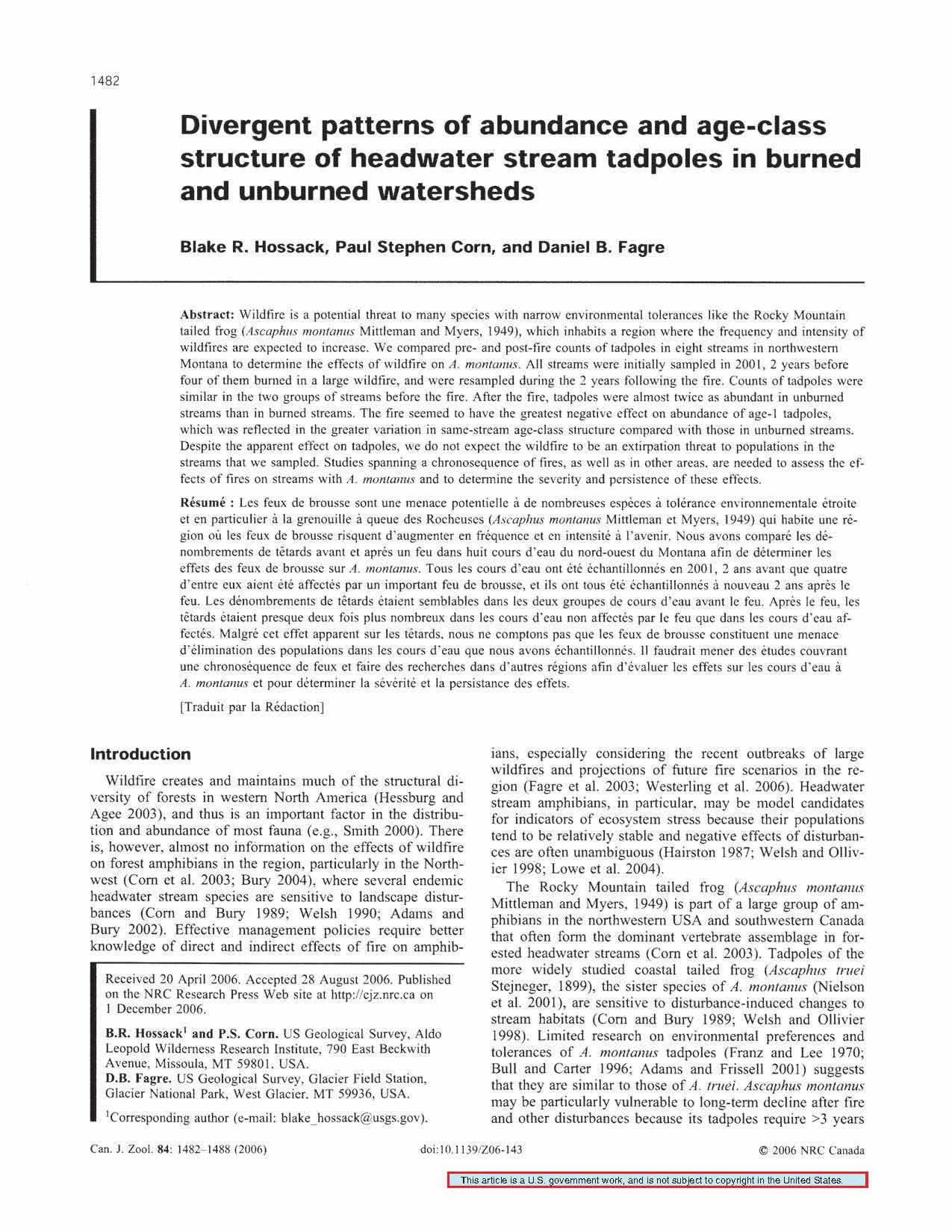Divergent patterns of abundance and age-class structure of headwater stream tadpoles in burned and unburned watersheds
http://www.fs.fed.us/rm/pubs_other/rmrs_2006_hossack_b002.pdf
Abstract/Summary
Wildfire is a potential threat to many species with narrow environmental tolerances, including the Rocky Mountain Tailed Frog (Ascaphus montanus Mittleman and Myers, 1949), which inhabits a region where the frequency and intensity of wildfires is expected to increase. We compared pre- and post-fire counts of tadpoles in 8 streams in northwest Montana to determine the effects of wildfire on A. montanus. All streams were initially sampled in 2001, 2 years before 4 of them burned in a large wildfire, and were resampled during the 2 years following the fire. Counts of tadpoles were similar in the two groups of streams before the fire. After the fire, tadpoles were almost twice as abundant in unburned streams than in burned streams. The fire seemed to have the greatest negative effect on abundance of age-1 tadpoles, which was reflected in greater variation in same-stream age-class structure compared to unburned streams. Despite the apparent effect on tadpoles, we do not suspect the wildfire is an extirpation threat to populations in the streams we sampled. Studies spanning a chronosequence of fires and in other areas are needed to assess effects on A. montanus streams and to determine the severity and persistence of effects on populations.
Publication details
| Published Date: | 2006 |
| Outlet/Publisher: | Canadian Journal of Zoology 84: 1482–1488 |
| Media Format: |
ARMI Organizational Units:
Rocky Mountains, Northern - BiologyTopics:
DroughtFire
Monitoring and Population Ecology
Stressors
Place Names:
MontanaKeywords:
amphibiansARMI
climate
ecology
fire
habitat
monitoring
population
stressors

